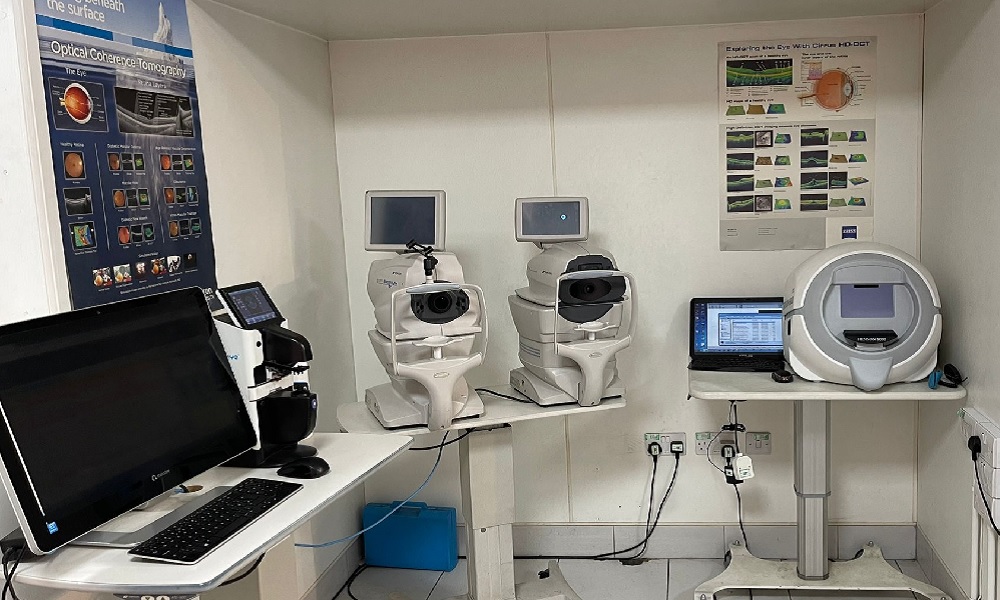-
Phone
020-8743-7552 -
Location
128 Uxbridge Road

Your eye health should be a main priority to you, as it is to us. Eye tests not only makes sure your eyes stay healthy, but also detects some common eye conditions early on. They are important in dictating whether your prescription needs changing or if you need to start wearing glasses.
It is recommended you have an eye test every two years for adults and one year for children. However, any patients with underlying health conditions may be asked to come in every year by the optometrist.
First a member of our team in Shepherds Bush branch will provide you with a free OCT scan, Digital retinal photography (DRP), Eye pressure test (tonometer) and an Autorefractor Test.
The eye pressure test involves a tonometer blowing a gentle puff of air onto the surface of each eye to measure the internal pressure. This helps the optometrist determine your risk of developing glaucoma.
The autorefractor test measures how long or short sighted you are by assessing the ability of your eyes to focus. This gives the optometrist an estimation of your prescription.
Fundus imaging involves taking an image of the back of the eye (digital retinal photography). This image is saved onto our system and helps us monitor any changes to your eye health with your future visits.
OCT scan, optical coherence tomography scan allows the optometrist to view the deeper layers of your eye and the structure to examine the health of your eyes. This is then reviewed by our optometrist who determines how healthy your eyes are or if there is any underlying health conditions to be concerned about such as:
The eye test will be conducted to also check the health of your eyes and to determine your prescription.
Essentially, an OCT scan is crucial in providing the optometrist a clearer idea of your eye health when testing your eyes and acts as a baseline comparison image so they can monitor any changes over time.
That’s the best part! At Special eyes eyecare, we do it for free before every eye test as it’s a crucial part in detecting any underlying eye health conditions early on, before they get serious.
The optometrist will take you into the testing room and will start the test. We make sure to sanitise all our equipment thoroughly before every test begins.
Our latest state of the art technology allows us to make sure your prescription is accurate and exact. A series of tests will be conducted to determine your prescription and to check the complete overall health of your eyes.
At the end of the test, the optometrist will discuss your result and if there is any concerns to address, they will give you appropriate advice and will talk through suitable glasses lens options to match your prescription and lifestyle. Treatments for any eye conditions are also discussed at this point, as well as possible referral to a specialist.
You will be able to get a copy of your prescription upon request
Being shortsighted means that you find it hard to see things clearly when they are far away. This is because the light from what you are looking at is focused in front of the retina rather than on it. It often runs in families so if your mum or dad, brother or sister is shortsighted you might be too.
Being longsighted is when light entering your eye focuses behind your retina. This means that you are able to see things further away clearer than things closer to you.
Normally the front of you I should be round like a sphere. If you have astigmatism, this means that the surface of your eye is not the same curvature across all angles. It is normally compared to the shape of a rugby ball where one side is flatter and the other side is steeper. This causes lights that enters your eye to focus in two places, causing distorted vision. This may cause your eyes to feel tired or you might get headaches.
@ Specialeyes Eyecare Opticians | Website Design By LWDS